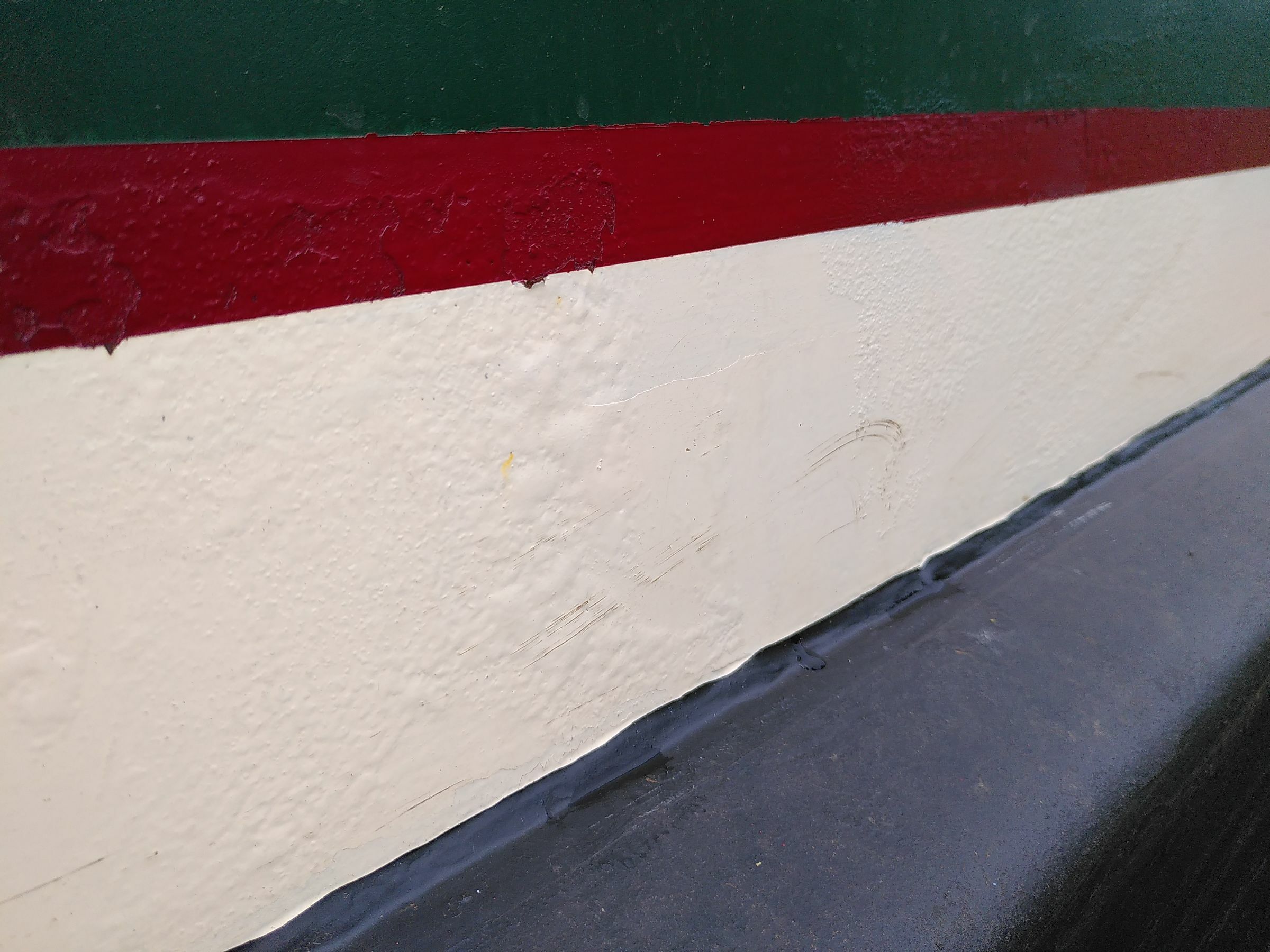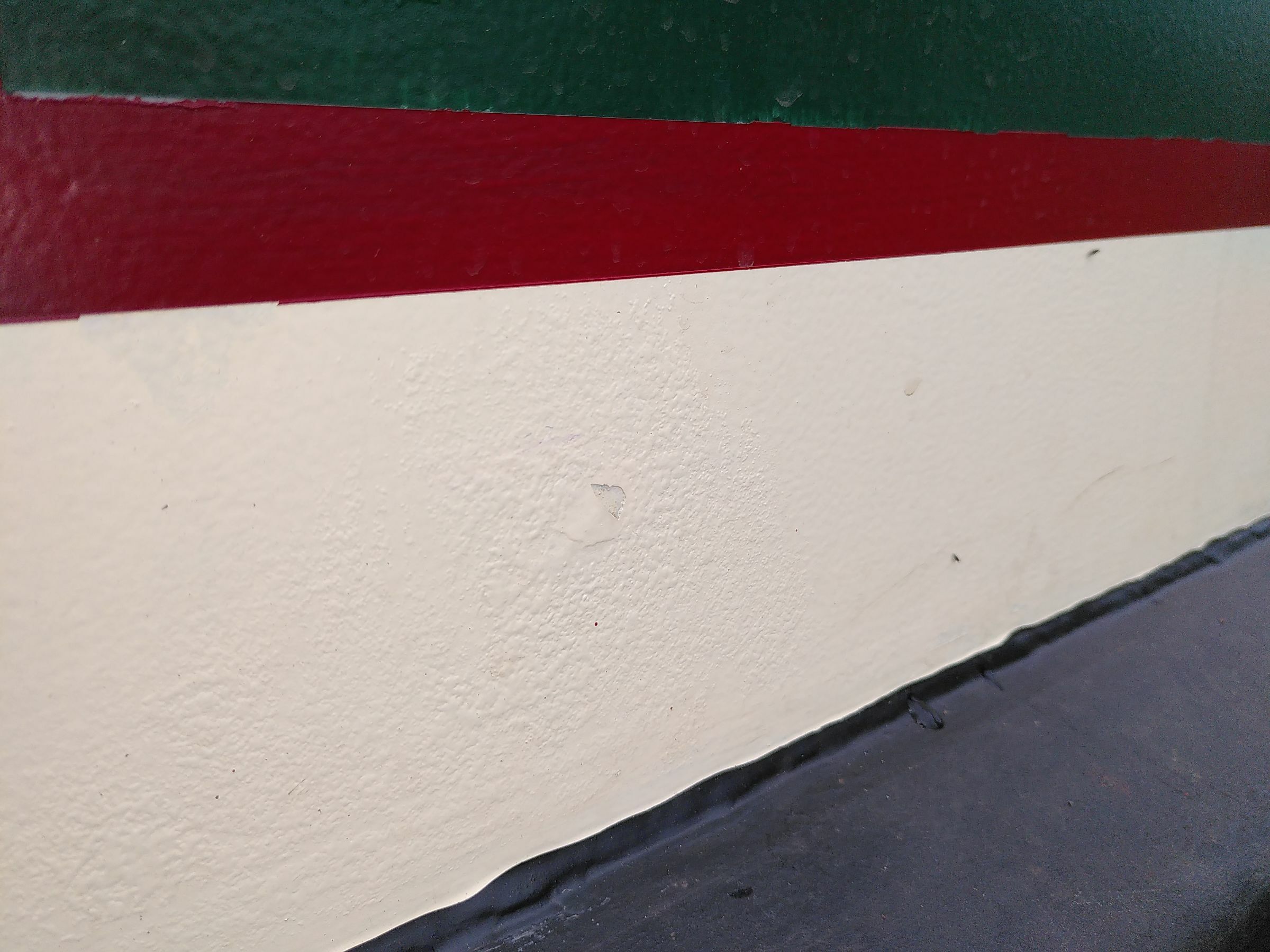-
Posts
4,758 -
Joined
-
Last visited
Content Type
Profiles
Forums
Events
Gallery
Blogs
Store
Everything posted by Theo
-
That, to me, seems like a really horrible person telling him lies to mislead him. Mind you, he should have bouhg some maps!
-

Why am I needing frequently to tighten my alternator belt?
Theo replied to Theo's topic in Boat Equipment
Thanks for all the useful advice. All the advice had already been followed except Tracy D'Arth's "There should be about 10mm maximum deflection on the longest run between pulleys with firm thumb pressure." It is embarassing to admit that I had not got it tight enough. I had been testing the tension on the shortest length from the water pump to the alternator (Theodora has a BMC 1.5) The longest length is from the alternator to the crank shaft. Tightening it with a little assistance of the jemmy should have done the trick but I can't test it properly until tomorrow when we will have run the batteries down a bit. David said "Have you always had a 70amp alternator, or is it a recent more powerful replacement? I replaced the original 35 amp alternator on Helvetiia with a bigger 70 amp one, still using the original 10 x 1050 belt, and experienced a lot of squealing under load. After tolerating it for a while, I arranged for Jonathon Hewitt at UCC to open out the crankshaft pulley V groove, fit a wider alternator pulley, and fit a 13.5 x 1050 belt - problem solved. " Actually, the alternator might be 100A. I fitted a new one when we first had Theodora. The old one, the original Lucas, IIRC, was not working at all when we bought the boat. And in my ignorance I thought that a bigger alternator had to be better. A few years later I got around to fitting an ammeter in the alternator output. What a worthwhile investment! I have never seen the output go higher than 85A and that was when we collected the poor old boat from where they had been painted. The soc (Smartguage) was reading 25%. I never let it go below 50% normally and usually get concerened when we approach 60%. I rarely charge the batteries with the engine when moored but when I do I run the engine just fast enough to give maximum current. I observe from the alternator current that at the beginning of the day the alternator output might go as high as 45A, falling back to 25A within five or ten minutes and gradually reducing over the rest of the day's cruising. Who needs a high paowered alternator? N -
I have had a squealy alternator belt three times in the course of a three week trip with few running hours (often less than 4 hours per day. Each time I have tightened it a boit more. The belt was new at the beginning of the trip so I would expect to have to retighten it once after the initial tightening, but three times seems a bit excessive. It is a 10mm x 1005mm belt in the correct pulley width. This morning the battery soc was down to about 70% and as soon as the split charge relay connected the domestics the alternator delivered about 55A. Its a 70A alternator. As the battery voltage built up and the current delivered by the alternator reduced to about 40A the squealing stopped. What I don't want to do is to overtighten the belt. I was told years ago that the alternator would stand lots of lateral force on the bearings but not so the water pump. So I want to keep the tension as low as I can consistent with not shredding the alternator belt and scattering bits of black dust over the engine. Advice please? Nick
-
I'm getting confused, Do you mean that the charging current is 20A? I think you must mean that and I would agree that it would be at far too low a soc... I am no longer confused. I see exactly what you mean. I just needed to allow my aging brain to catch up and finish processing. 🙂 N
-
What's liquid propane? All propane in bottles starts as liquid then boils off to gas. N
-
I have a Kipor Sinemaster 1000 which is acksherly specced at 900VI so don't be misled by the 1000. I ran it on petrol for bit then converted it to gas. So much better and cheaper! N
-
or even a SmartBank!
-
Just to amplify that a bit. You need the terminal voltage of the batteries. Buy a cheap digital as Tony suggest but run a pair of thin wires all the way from the battery bank to where you sit. Battery bank connected to one end, voltmeter connected to other end. Virtually zero current drawn therefore no voltage drop. Simples? N
-
Confession time: Te threads have been stripped for some time. What I did for the last couple of services was to insert some bits of fine copper strands stripped out of scraps of wire that I had. They worked fine but I thought that there might be something a bit more refined. Thanks for all the suggestions. The problem with buying old jobbies to canibalise is that they might have just the same threads stripped!. N
-
Done that. Thanks for the email address. N
-
Here's my contribution sent to editor@canalboat.co.uk: Dear Sir I would like to add my voice to the protests about the appalling behaviour of your contributor. With manners like this he is not a worthy representative of the magazine that you work for. My comments refer to the evidence on this YouTube video: http://youtu.be/ldoVS0idTBw With boat handling like this he is not fit to offer advice to anyone, especially the novices who might be reading your magazine. Here are some of the more obvious mistakes that he made: Passing ahead of the large white boat seen in the distance. He should have left this boat to port and turned under his stern. Failure to appreciate that on a first come first served basis the cruiser from which the video was filmed clearly had precedence. Approaching a mooring while running with the current. The correct way is to turn and approach while stemming the current. This gives best steering with minimum speed over the ground. Deliberately ramming the cruiser as evidenced by his operation of the tiller. Putting his partner at risk. (She was standing on the gunwale during the deliberate ramming.) I look forward to hearing your comments. Yours faithfully N A Cooke Just noticed the date of the original post! Methinks I am a little late in making my thoughts known! N
-
Thanks, Mr D'arth. Drilling and rethreading would seem the most satisfactory way. I had heard (read?) that you can insert a thing like a spring into the hole to produce a new thread but I suspenct that this would mean drilling out a larder hole and rethreading with a tap would be much more satisfactory. N
-
I have a this here heater which has done valiant service for the past 15 years. I have occasionally cleaned the glow plug and once or twice cleaned the flame detector but now I have a problem. The two cross head machine screws that hold the glow plug boss in position have stripped the threads of the alloy casting into which they screw. Ditto a couple of the hex machine screws that hold the fresh air fan assembly to the alloy body. Is there a sensible way of sorting out this problem? Nick
-
I wholeheartedly agree. We did it oursleves the last time and would have saved ourselves a lot of trouble if we had done the same again.
-
Thanks all. This all confirms what we know is the case. They have done a really rubbish job! Now we need to decide the next steps... Nick
-
Reply to Mr Cuthound: Would you be willing to say how much you paid and who did the work? N
-
I could possibly say but we are moored at Tardebigge Old Wharf and the boat yard, which also hires out lots of boats (reasonably painted) is the closest one upstream from us. Nick
-
Sorry, error: It was only the cabin that they were supposed to take down to the bare metal. N Only the cabin. I said the wrong thing in that reply. N
-
About as naff as they come. And one of the staged payments was to strip the hull down to bare metal! I don't think that I bothered to take a larger shot. It looks OK from a distance.
-
When we bought Theodora she was soundly painted in a plain maroon colour. We didn't like that much so I prepared for a new paint job merely by keying up the topcoat (There was no rust.) and SWMBO set about painting her with undercoat and top coat. Very nice she looked and after five years she was still looking very good. After seven years she was begining to look scruffy and after another couple of years we decided to have her professionally done. The instructions that we gave were that we didn't want a high gloss shiny job. That was not our taste. We paid a booking fee and then lockdown came. We paid a couple of staged payments but could not inspect the job because of lockdown. When we eventually were able to inspect the finished job we were perturbed to discover much that was wrong with the way that the boat had been left dirty and untidy. Things had not been put back. The MPPT controller had been destroyed because the electrician didn't understand how to wire up the panels and much else... So far I have not paid the balance but am negotiating an agreement where the balance is reduced according to how much work I will have to do to reinstate poor Theodora. In addition, because the paint job is suspect I am going to require the yard to give me a written guarantee that they will repaint her if, as I suspect, the rust comes through in various places. I have attached photos of some of the suspect areas. The wording of the guarantee (if that is the correct word) will state how long the paint job should last. This will be the length of time that the guarantee will last. So my question is: If you have paid thousands of pounds for a paint job, how long would you think it should last until a few rust spots appear and how long before a complete repaint will be needed? Nick
-
I think that jump leads may be the way to go, but I must test the starter battery. The whole set is very old! Thanks for all the help. Nick
-
Having fitted the new Victron controlle as advised elsewhere and discovered that it is vey good and done an experiment or two I now have some answees and another question. I tried fitting connecting the output from the MPPT to the alternator/engine battery side of the relay. This should have meant that the Smartbank advanced woould have treated the solar panels as a normal charge source and charged the engine battery in preference to the domestics until it was fully charged. At that point it should have energised the relay and included the domestics. Smartbank certainly tried to do that but at times the charging current was so low that it did not energise until Smartbank Advanced's "Hold" function was activated. It would hold for a few minutes and then deenergise the relay for another few minutes then go on to hold again. The result was that the intelligent charging feature of the MPPT got really confused by the repeated changing of the battery bank size from 90Ah to 600Ah. The MPPT would go on to different charging regimes (absorption, bulk, float) when what it really needed was to stick with bulk. I have now changed back to Gibbo's recommendation to connect it directly to the domestics and all is well except... ... for the fact the the solar panels no longer charge the engine battery. This is a nuisance. Dow anyone have any thoughts? Nick
-
If I recall correctly lots of mooring rings were installed, then a person tripped over one so they cut them off and now you can't moor! N
-

Tonic required. Send in your photos of what is nice on the waterways now.
Theo replied to DandV's topic in General Boating
A cautious use of the signpost, perhaps? -
I think that it was on the Middle Levels prolly close to Upwell. N





